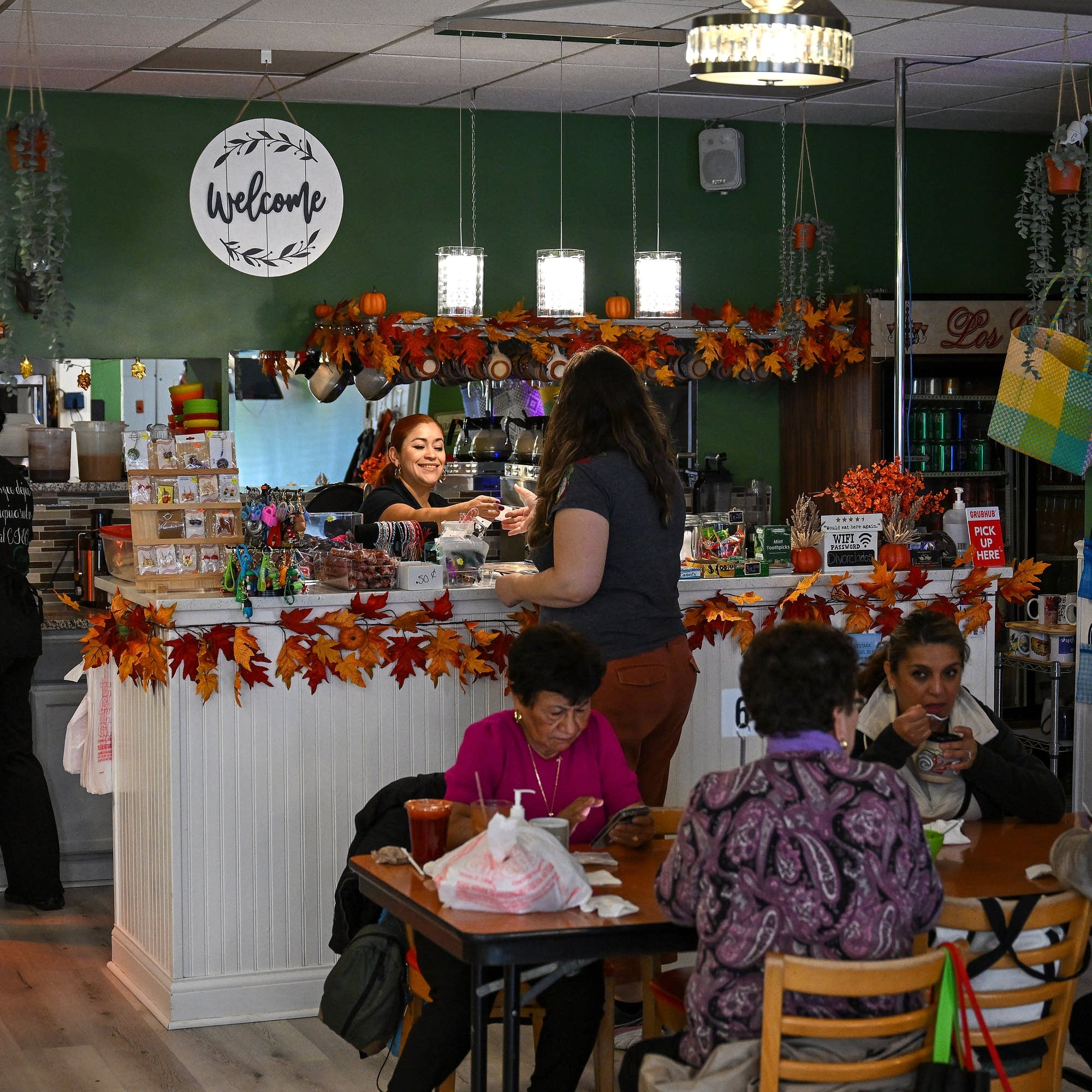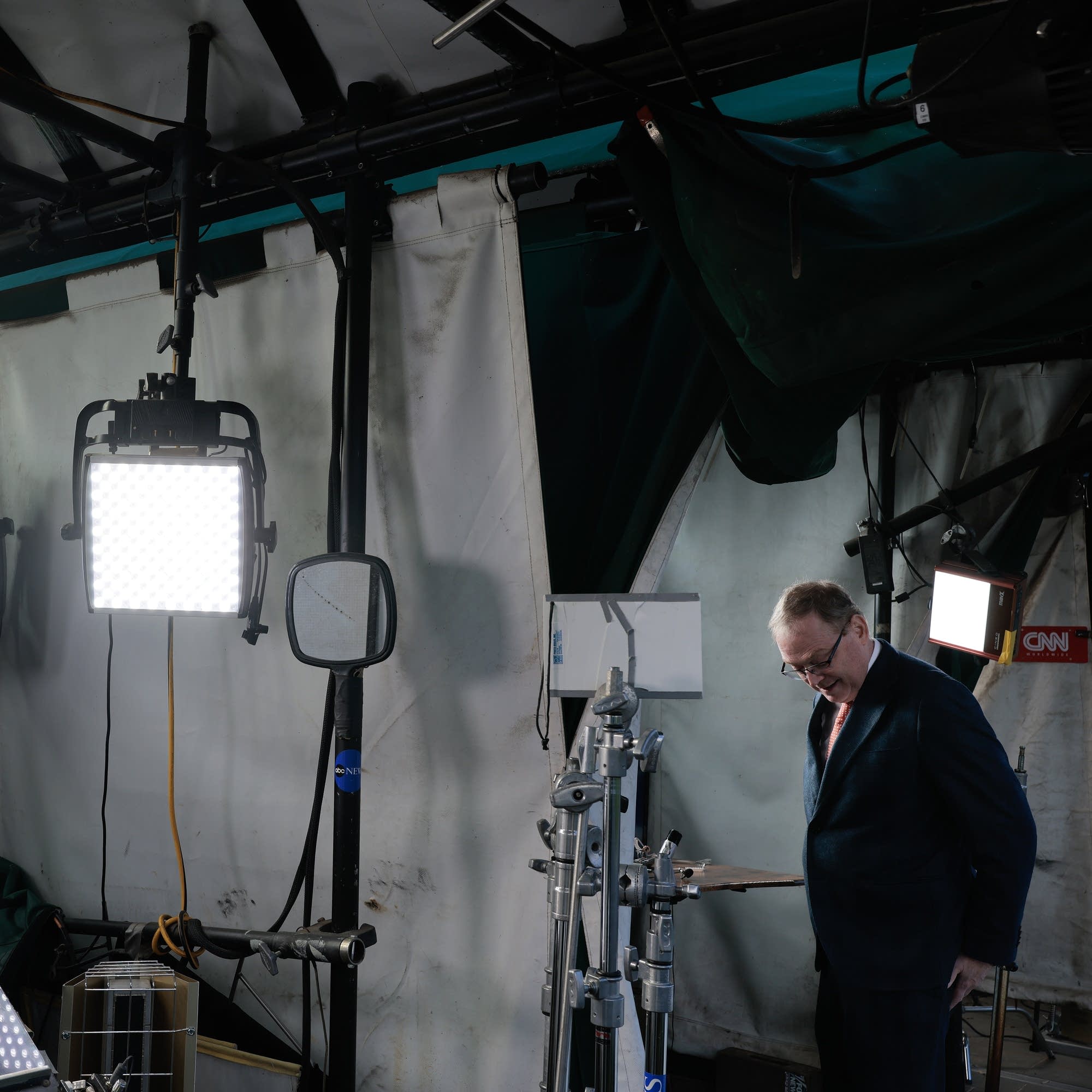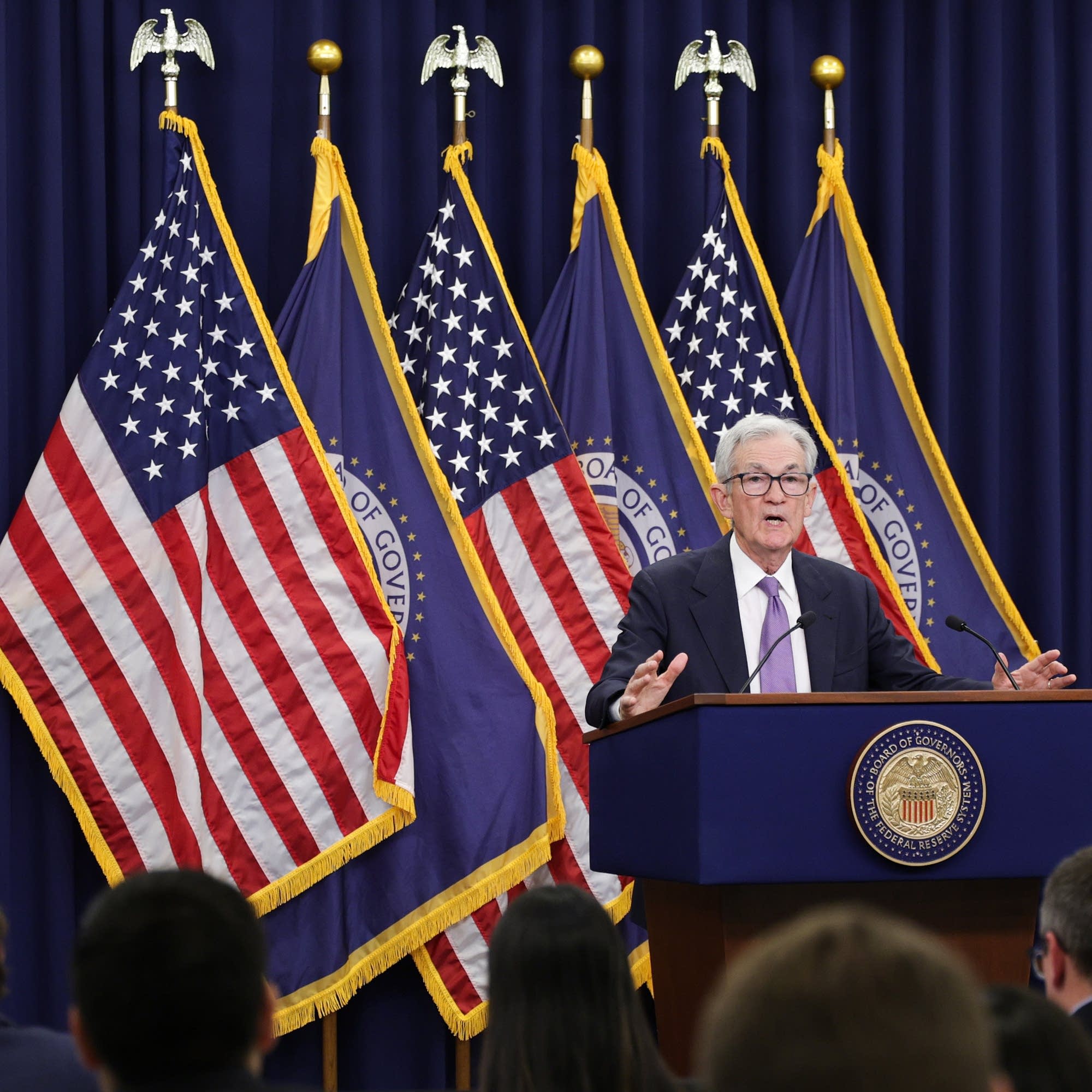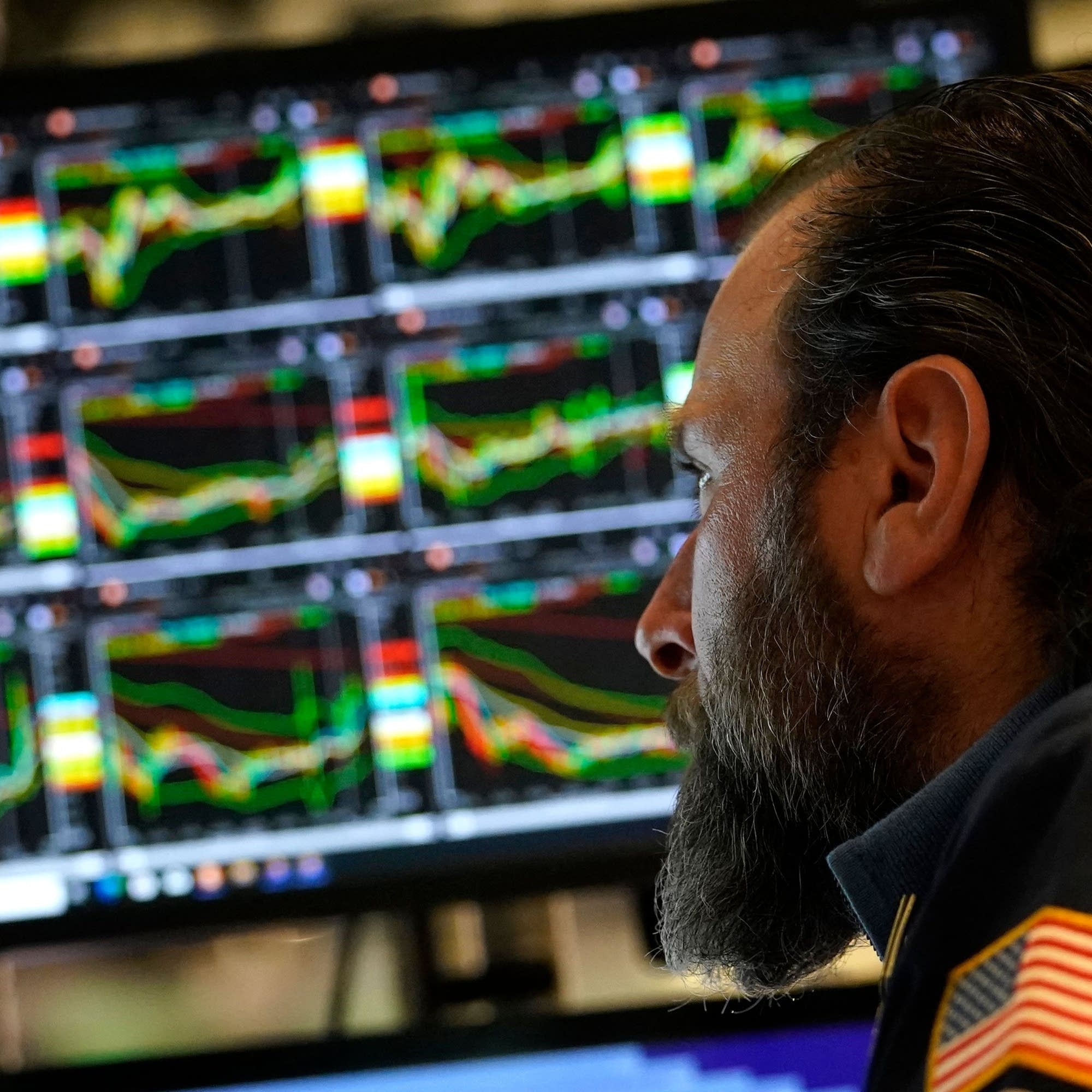Trump's tariffs take a toll
In another wave of tariff news, Trump announced a 100% tariff on Chinese goods that will take effect in November. The constant back and forth of tariff policy has left import-reliant business owners frustrated, defeated and wondering how long they can hold out. Also in this episode: Slowing immigration explains a change in break-even employment, California explores public AI compute projects to create shared GPU infrastructure, and GDP may grow more than expected, despite economic uncertainty.
Every story has an economic angle. Want some in your inbox? Subscribe to our daily or weekly newsletter.
Marketplace is more than a radio show. Check out our original reporting and financial literacy content at marketplace.org — and consider making an investment in our future.
Press play and read along
Transcript
Introducing your new Dell PC with the Intel Core Ultra Processor. It helps you handle a lot even when your holiday to-do list gets to be a lot.
Like organizing your holiday shopping and searching for great holiday deals and customer questions and customers requesting custom things, plus planning the perfect holiday dinner for vegans, vegetarians, pescatarians, and Uncle Mike's carnivore diet.
Luckily, you can get a PC with all-day battery life to help you get it all done. That's the power of a Dell PC with Intel inside, backed by Dell's Price Match Guarantee.
Get yours today at dell.com/slash holiday. Terms and conditions apply.
See Dell.com for details. This podcast is supported by Odo.
Some say Odoo business management software is like fertilizer for businesses because the simple, efficient software promotes growth.
Others say Odoo is like a magic beanstalk because it scales with you and is magically affordable.
And some describe Odoo's programs for manufacturing, accounting, and more as building blocks for creating a custom software suite. So Odoo is fertilizer, magic beanstock building blocks for business.
Odoo, exactly what businesses need. Sign up at odoo.com.
That's odoo.com.
This economy is growing how
from American public media. This is Marketplace.
In Los Angeles, I'm Con Rizdahl. It is Monday today, 13 October.
Good as always to have you along, everybody.
Despite everything that is going on in this economy right now, tariffs, inflation, a sluggish job market, the National Association for Business Economics was out with a survey this morning that shows gross domestic product is expected to grow more than they had been thinking it would be growing back in June.
This summer, that number was 1.3% annualized. Now, 1.8%.
And the Atlanta Fed has a GDP tracker that shows growth in the third quarter, again annualized, growth there could be as high as 3.8%.
What's up with that? Marketplace's Henry App is on it. Here's how we calculate gross domestic product.
It's consumption plus government spending plus investment plus exports minus imports.
That last piece pulled GDP down early in the year because businesses imported a ton of stuff to get ahead of tariffs.
But after that, says Joanne Feeney at Advisors Capital Management, we saw a reversal. We saw a significant drop in imports in the middle of the year.
Leading GDP to rebound.
But it wasn't just imports. The next piece of the equation is capital investment, and that's been huge thanks to the build out of AI data centers, Feeney says.
These are expensive facilities, full of domestically designed and produced equipment, and that is absolutely having a significant impact on the investment numbers.
It's also having a big positive impact on the stock market, and that's propping up consumer spending, especially among people who own stocks.
Stephanie Kelton is a professor of economics at Stony Brook University. People at the very top have, through a sort of wealth effect, been powering consumption.
As we've reported before, the top 10% of earners were responsible for as much as 50% of consumer spending for part of this year.
That's pushed up GDP, even as the next piece of the equation, government spending, has been a drag, Kelton says. Add all this together, and GDP looks pretty good for now.
It doesn't feel sustainable to me. Shannon Grine is an economist at Wells Fargo.
There's still just a lot of uncertainty in the economy, she says, around tariffs and interest rates and the government shutdown.
All this uncertainty, from what we're hearing anecdotally and what we're seeing in the data, is leading to just broad confusion and kind of just a halting in behavior of businesses.
She thinks that'll start to show up in the form of slower GDP growth growth in the months ahead. I'm Henry App for Marketplace.
Without rehashing too much ground by way of setting up this next piece, on Friday last, President Trump took to his favorite policymaking tool, his social media company, and announced 100% tariffs on Chinese imports starting November the 1st.
Then on Sunday, another post, don't worry about China, said the president. It'll all be fine.
That's a quote.
Whether he follows through on that tariff thread or, you know, not, business owners in this economy are back in that place where the only thing that's clear is that the tariff chaos is going to continue.
Marketplace's Kristen Schwab made some calls. Usually when Beth Bennicke sees a new tariff announcement, she jumps into action.
On Friday, she turned off her phone. I spiraled.
I mentally
just lost it. I mean, what do I do? Benecky owns Busy Baby.
The Minnesota company makes high-chair placemats with tethers for toys so they don't don't fall on the ground.
The products are manufactured in China. You're going off of a truth social post and trying to figure out: can I ship my products to get them here in time for the holiday or not?
The company is still making up for sales it lost when it ran out of inventory this summer after a tariff hike.
Sales are down overall, she thinks because new parents are having to spend more on high-tariff necessities like car seats and cribs.
And on top of all of this, her husband is a soybean farmer, caught in China's soybean boycott. Beneke is tired.
I mean, these are my inventions.
I have been talking to business owners about tariffs since President Trump was elected nearly a year ago. I've called them after trade policy starts and stops and starts.
And today, the energy is different. Frustration has shifted into desperation, maybe even defeat.
Because Because for some companies, if this tariff tit-for-tat drags on...
I mean, we don't make it. Greg Sugar owns bow ties of Vermont and imports silk from China.
He's looked at getting fabric from Vietnam, but making a big change seems silly when tariffs are constantly shifting. He's trying to rush a shipment before the November 1st deadline.
Who wants to run a company where... for at least the next three years, you're going to be dancing with the tariffs and not knowing where we're headed.
Because six months after Trump's so-called Liberation Day, it's clear that tariff uncertainty is a part of doing business, no matter where you import from.
Ben Kneppler, who co-owns True Places, a camping chair company in Pennsylvania, has put manufacturing in Cambodia on hold.
He has until December to figure out whether he can pay whatever the tariff might be. We'd need to feel much more confident that the rules aren't going to suddenly change tomorrow.
I asked what would give him that confidence, and Kneppler says at this point, nothing.
I'm Kristen Schwab for Marketplace. It's all real, man.
It's all real. Wall Street today, sell on the president's social media mutterings on Friday.
Buy on him today.
We will have the details when we do the numbers.
One of my favorite things about the monthly unemployment report, when it comes out, is that it's got a margin of error. I mean, it makes sense.
Measuring the American labor force, 170 million people strong, is no mean feat. So getting within plus or minus 136,000, that's the most recent one.
That's pretty good.
Also important, but perhaps equally unknown to lay listeners is that timing is everything, specifically when the Bureau of Labor Statistics and the Census Bureau collected the data that goes into that monthly report.
It matters here on day 13 of the shutdown, for those of you keeping track at home, because the October jobs report is being affected too.
That's because today begins what would usually be the BLS's reference week. Yes, it's a bit weedy, but it is a big deal in the economic data world.
Kate Bond is here to explain.
She's She's a chief economist and senior vice president of research at the Institute for Women's Policy Research. Kate, it's good to have you on the program.
Glad to be here.
So this reference week thing that I mentioned, what is that exactly?
The reference week is seven days. So it's, you know, a full calendar week.
that includes the 12th of the month that the census collects the data that the BLS uses for their employment situation summary or jobs report.
And so since the government is shut down for this week that contains contains the 12th, that means they are not collecting that data that would be in the jobs report.
Let's say, because miracles do happen, let's say the government opens again tomorrow.
Could the BLS and the Census Bureau sort of jump through hoops and get all that data going so that we can eventually, at some point reasonably timely, get an October jobs report?
I mean, the census enumerators do miraculous work, and that might still be too high of a threshold because they haven't had that time to prepare for it.
So, you know, if you think about the life cycle of this report that comes out every month, they spend the first couple of weeks preparing to collect the data.
They collect the data and then they spend the next couple of weeks analyzing it and getting it ready for release. And so they're already two weeks behind in that schedule.
So even if it did reopen, it would probably be pretty tricky for them to be able to do that.
Trevor Burrus: And then the longer this goes on, obviously, the more reports are affected, be it BLS or pretty much anybody else who collects data for the government, right?
Exactly. And so, you know, I think that is what is pretty concerning.
I know there was a lot made of recent revisions to the reports because what happens anyway in the regular course of collecting this data is some data comes in delayed.
And when it comes in delayed, then we update the previous numbers to make sure it's more accurate. And now basically all that data is going to be delayed.
And so as, you know, whenever we finally do reopen the government, it'll take a long time to get back in the retrospective data. And so there'll be a lot of revisions.
It'll be hard to get an accurate picture for a little while. Yeah, I want to make sure that people understand what you're saying.
So once the government reopens, they will, in theory, go back and look through all that data and will get it, but it will be delayed and probably incomplete-ish.
Exactly. I mean, if you think about it, it's one thing to ask a person, are you working this week? They know if they're working this week.
If you ask them, were you working a month ago that week with the 12th in it? That might be harder for them to answer.
And the government still does that diligent work of trying to get that retrospective picture. It's just harder to do.
Let's forget the Federal Reserve for just one second because everybody's like, ooh, the Fed needs these data to do their thing, and that's great.
But look, you are a senior vice president for research at a research shop. What's it doing to you?
We are in a really tricky place, in particular because there is some really good private sector data that people can look at to start to get a picture of what's happening to the economy right now.
But this census data that the BLS uses for the jobs report is the best source of demographic data.
And so what we're not getting in those private sector data sources is information on exactly the types of workers that are being impacted.
And so where I work at IWPR, we look at what's happening to women and in particular women of color. And right now, it is just zero information on what is happening to women.
And that's particularly concerning because women's employment, particularly black women right now, appears to be a leading indicator.
And so what that means is that because there are more vulnerable groups of workers, when the economy starts to turn, maybe turn down, they're going to be hurt first, sort of like a canary in a coal mine.
And that would tell us sort of what's going to happen to the broader economy based on what's happening to these specific demographic groups.
But instead, without that demographic data, we don't get to start to see those canaries in the coal mine, and we don't really know where the overall economy is heading. How worried are you, Kate?
I mean, seriously.
Seriously, I am very worried. I think this shutdown and the stoppage of data collection couldn't have happened at a worse time.
It really seemed like we were on the precipice of are we heading towards another recession or not? The labor market was slowing down. Prices were going up.
It looked very worrisome.
And then now we're in a position where policymakers, businesses, investors cannot respond.
And the longer we delay a response to anything happening in the economy, the worse the outcomes are going to be.
Kate Bond, she's chief economist, also the senior vice president at the Institute for Women's Policy Research. Kate, thanks a lot.
I appreciate your time. Thank you so much.
It's not fair to call Los Angeles a one-industry town, but the movie industry does carry a lot of weight around here. And Hollywood's had a tough year.
A lot of people who work in the industry were displaced by the fires in January. And other cities have realized what a big business the movie business is.
According to Film LA, which is the city office that tracks industry data, on-location production here in the second quarter was down 6.2% from the year before.
And the people most affected, definitely not the faces you see on screen. Here's today's installment of our series, My Economy.
Hi, I'm Nancy Steiner, and I'm a costume designer.
I have always loved creating worlds, and I also loved watching old movies from the 40s and 50s, and
seeing an actor in just a totally different role, role, and that costume defines who he is when you first look at them. You can tell who that person is.
I was getting paid $300 a week as an assistant.
It felt great. I just started assisting, doing commercials, print ads, videos, and then started my own career really in that time of the early 90s music video world where MTV was everything.
Yeah, let's go somewhere fun.
Well, so, oh, we're in the 2000s, which is crazy. And I'll tell you, when I started coming to costume houses, I mean, you just start pulling.
You go to a place,
you start looking at the clothes, and you, you know, you get a bunch of stuff together and you do your first bidding.
And that's usually like the
kind of okay, this works and this doesn't. Like, okay, these skirts are not working, but this looks really good.
Okay, so this is like the 40s
and 50s
and 60s.
And here we go, like you know, incredible kaleidoscopic 60s sequin dresses. And
this is the 70s and 80s gowns, evening wear, we call it. You really just have to look everywhere that you can
until you find the right thing. And sometimes you don't know that until you get in the fitting room
and put it on.
Right? Look at these are 30s dresses. I mean, feel that.
It's like it's gonna disintegrate because it's so old.
So it's like 100 years old almost. I mean, it's, it's, it really is.
And the thing about, you know,
clothing is that it tells us about history and it tells us about how people
live their lives, you know?
It says so much about who we are and who we were.
Nancy Steiner here in Los Angeles. No matter what you do or where you live, these are your stories.
So please help us tell them, would you? Marketplace.org slash myeconomy.
Coming up.
There are a really big potential for really bad things to happen. Oh, I can't wait to hear that story.
First, though, let's do the
dow industrial is up 587 today 1.3 46 067 the nasdaq gained 490 points that is 2.2 percent 22 694 the s p 500 jumped 102 that's points 1.6 tenths is the percent 66.54 no i don't know what 1.6 tenths is gold new record today china trade tensions or credit for that one added more than two percent up over four hundred dollars an ounce energy was up on higher crude x on Mobile added about 1.3% today.
Bond market, have the holiday off your listening to Marketplace.
This Marketplace podcast is supported by the University of Illinois Geese College of Business. Earn a world-class MBA degree completely online at your own pace.
Through their online MBA program, you'll learn from amazing faculty and network with classmates on a global scale without having to put your career on hold.
Take your career to the next level by applying what you learn in real time. Get started at onlinemba.illinois.edu.
That's onlinemba.illinois.edu.
Recruitment. In law, it can feel clinical, procedural, lacking the human element that defines the profession.
LHH believes it should be more.
By connecting legal talent to meaningful opportunities, not just matching skills to job descriptions. Beautiful things happen in legal careers.
A mentor shapes a future. A team argues, then aligns.
The associates you hire become the advocates you trust. Making the thousands of hours in practice truly matter.
Recruitment, development, career transition.
LHH, a beautiful working world for the legal world.
Discover recruitment solutions today at LHH.com/slash beautiful.
This Marketplace podcast is supported by Justin Wine. Get the celebration ready with Justin Wine.
Since 1981, Justin has been producing world-class Bordeaux-style wines from Paso Robles on California's Central Coast.
Justin offers curated gift sets, library wines, magnums, and even custom-etched bottles. Visit justinwine.com and enter Market 20 for 20% off your order.
Justin offers the perfect holiday gifts for clients, colleagues, friends, or family. Be sure to check them out at justinwine.com to receive 20% off your order for a limited time.
How many times have you wished you could be in two places at once? With Wix, you practically can. Wix's website builder is packed with powerful AI tools to make running your business online easier.
Build a full site just by talking with AI. Get an AI agent to manage your sales and marketing.
Or work like a 10-person team, even if it's just you.
So you don't need superpowers to get everything done. You just need Wix.
Try it now for free at Wix.com.
This is Marketplace. I'm Kai Rizdahl.
Another story now about the American labor market, driven, as you could probably guess, by the continuing government shutdown and what that means for what we know about the American labor market.
Official sources of data are on what one hopes is a short pause, but there is some new information out from the Federal Reserve Bank of Dallas that sheds some light on the, shall we say, modest payroll gains we've been seeing the past couple of months.
The operative phrase you're looking for here is break-even employment, as Marketplace's Elizabeth Troval explains.
Break-even employment is sort of a balance between the number of job seekers and the number of jobs available.
Or, in the words of Ali Bustamante with the University of New Orleans, the number of jobs the economy needs to add a month in order to keep the unemployment rate stable.
Think of it as kind of the metabolism of the labor force. The number of of hungry workers in should match the number of new jobs out there.
Right now, the Dallas Bed estimates that sweet spot today is around 30,000. And that is a big drop from previous years.
Just two years ago, we basically had an economy where we had to add about 250,000 jobs a month to achieve breaking employment.
So what was happening in 2023 that made the break-even point so much higher than it is today? The population of the United States was growing very rapidly. V.
V.
Chari is with the University of Minnesota. He's talking about migration.
A large number of people were crossing the border, and those people came looking for work. So lots of new job seekers came in.
And the U.S. economy had to find ways of providing them with work.
Those workers found the jobs they came for. In fact, in 2023, unemployment was lower than it is today.
And now, far less people are migrating to the U.S. And that has changed this break-even point, which helps us understand why we're seeing fewer new jobs, says Ali Bustamante.
Goalposts have shifted, and we just need to add about 30,000 new jobs a month in order to keep the unemployment rate the same. So there's some context for that sluggish job growth.
Mitchell Barnes is with the conference board. And I think really when we reflect back on the last 12 to 18 months, we are in a much better position than I I think we assumed we would be in.
It's a new labor market reality, and demographic volatility has changed the balance. I'm Elizabeth Krobal for Marketplace.
GPU graphics processing units are the must-haves must-haves of the artificial intelligence economy. Really advanced computer chips that are essential to training and using AI models.
And the bigger and more complex those models get, the more GPUs they require.
Elon Musk famously said they are harder to get than drugs, though if you drop multi-billions of dollars on them like his company XAI did, well, they can be had.
For those without the deep pockets of big tech, though, access to that kind of computing power is out of reach. California's got a new initiative.
It's called Cal Compute, to build a public GPU cluster for startups and nonprofit researchers. Other states have done the same thing.
Marketplace's Megan McCarty-Carino has more on the push for public AI computing.
The Computer History Museum in Silicon Valley takes you through 2,000 years of computing history from the abacus to the iPhone.
Curator Mark Weber gives me a tour of the machines that remade modern life.
This is mainframes, the IBM 360.
This little spool of paper tape with holes in it is the origin of Microsoft.
He says the history of computing isn't just the story of the scrappy startups that became household names, but of cross-pollination between industry, government, and universities.
In my mind, I see them all as complementary. It's kind of an ecosystem where you need all the parts to make it work.
But lately, that diverse ecosystem has been breaking down.
Only a few private companies can now afford to develop and study the biggest, most advanced artificial intelligence models.
There's a lot of raw potential that sits out there right now to have incredible scientific breakthroughs if we were able to resource appropriately.
Russell Wald is the executive director of the Stanford Institute for Human-Centered AI.
He says even the best resourced universities typically only have access to a few hundred advanced GPUs, not the hundreds of thousands held by big tech.
If it's only five companies that are just the sole vanguards of truth in this space, you're not going to get that curiosity-driven type of research.
The big kind of breakthroughs that aren't profit-driven.
Like global positioning systems, MRI testing, and the internet, which all came out of publicly funded academic research. And then there's the kind of stuff industry might not want the public to know.
Think tobacco companies and cancer or fossil fuels and climate change, says Stella Biederman of the nonprofit Eleuther AI. There's a really big potential for really bad things to happen.
Maybe they knew these things, maybe they don't, but they definitely don't share it with the world.
She says all commercial frontier AI models are closed to some extent, so you can't get under the hood to run experiments. Like, how do you prevent a model from giving users bioweapon instructions?
To study that, Eleuther AI AI built its own models from the ground up.
I am a very strong believer in independent research that doesn't require like buy-in, assistance, or funding from these powerful tech companies.
That's where public compute could come in.
Hannah Haji Shirzi is a computer science professor at the University of Washington who works with the nonprofit Allen Institute for AI to build totally open data sets and models that researchers can experiment with.
It would be very good if it is not just accessible by a few non-profit companies or only a few universities because a lot of these questions could be solved together as a community effort.
The institute has partnered with the National AI Research Resource, which is piloting a system to provide access to government GPUs.
But even most federal supercomputers aren't optimized for cutting-edge AI. Aji Shirzi says we need to build build new public infrastructure and likely subsidize commercial providers.
It's a model that was common at one time, says Mark Weber at the Computer History Museum, back when we were in a different kind of tech race.
This is one workstation, one terminal, because these were designed. It was a whole system to see Soviet bombers coming over the pole or coming toward the United States.
This is giving me like Dr.
Strangelove vibes. It's totally, and that stuff is real.
During the Cold War, government urgency and funding helped launch the computer age. Some researchers say we'll need it again to thrive in the AI one.
I'm Megan McCarty Carino for Marketplace.
This final note on the way out today, in which one of the masters of corporate branding kind of blows it, honestly. Apple TV Plus, the company says.
It's its streaming service.
Well, it's going to rebrand to Apple TV. The catch, of course, is that Apple TV is already a thing.
You can buy or rent movies on it. It is hardware as well.
What do you suppose Steve Jobs would think? Hmm?
Amir Bibawi, Kaylin Esch, John Gordon, Noya Carr, Amanda Peacher, and Stephanie Seek are the marketplace editing staff. Kelly Silvera Silvera is the news director.
And I'm Kai Risdahl.
We will see you tomorrow, everybody.
This is APM.
Hey, everyone, it's Bridget, host of Million Bazillion, a podcast for Marketplace.
You've probably heard about the government shutdown, but if you're anything like our young caller Esme, whose dad is a federal worker, you might still have questions.
I've noticed that my dad hasn't been going to work and I don't know when the government shutdown will stop and my dad can go back to work. We can help.
Tune into our recent episode where we explain what you and the young ones in your life need to know about government shutdowns. Listen to Million Bazillion on your favorite podcast app.





